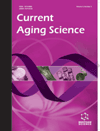
Full text loading...
We use cookies to track usage and preferences.I Understand

Regular physical activity (PA) promotes mental and physical health. Nevertheless, inactivity is a worldwide pandemic, and methods to augment exercise benefits are required. The constrained disorder principle (CDP) characterizes biological systems based on their inherent variability. Therefore, we aimed to investigate the association between intra-individual variability in PA and disability among non-athlete adults.
In this retrospective analysis of the longitudinal SHARE survey, we included non-disabled adults aged >50 with at least six visits over 14 years. Self-reported PA frequency was documented bi- to triennially. Low PA intensity was defined as vigorous PA frequency less than once a week. Stable PA was described as an unchanged PA intensity in all consecutive middle observations. The primary outcome was defined as a physical limitation in everyday activities at the end of the survey. Secondary outcomes were cognitive functions, including short-term memory, long-term memory, and verbal fluency.
The study included 2,049 non-disabled adults with a mean age of 53 and 49.1% women. In the initially high PA intensity group, variability in PA was associated with increased physical disability prevalence (23.3% vs. 33.2%, stablevs.unstable PA; P<0.01; adjusted P<0.01). In the initially low PA intensity group, variability was associated with a reduced physical disability (45.6% vs. 33.3%, stablevs.unstable PA; P=0.02; adjusted P=0.03). There were no statistically significant differences in cognitive parameters between the groups. Among individuals with the same low PA intensity at the beginning and end of follow-up, variability was associated with reduced physical disability (56.9% vs. 36.5%, stablevs.unstable PA; P=0.02; adjusted P=0.04) and improved short-term memory (score change: -0.28 vs. +0.29, stablevs.unstable PA; P=0.05).
Incorporating variability into PA regimens of inactive adults may enhance their physical and cognitive benefits.

Article metrics loading...

Full text loading...
References


Data & Media loading...